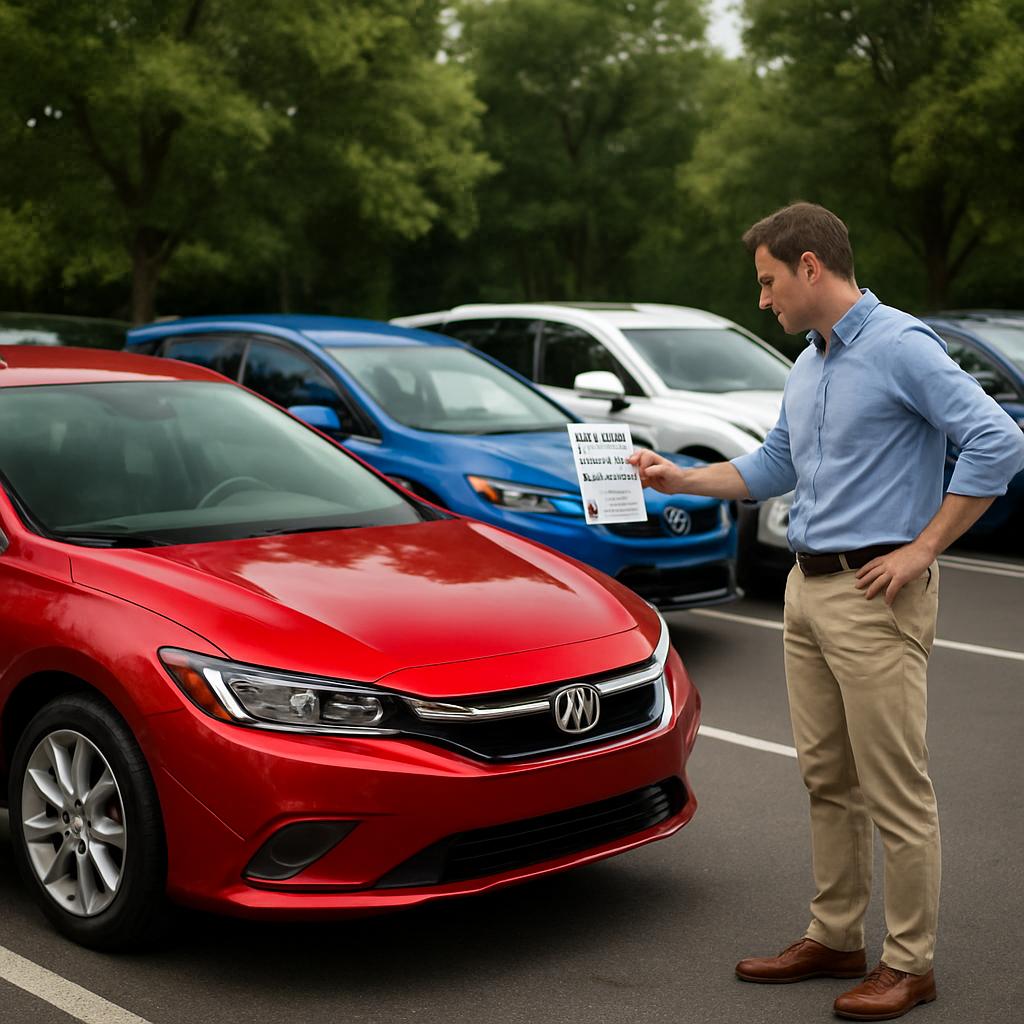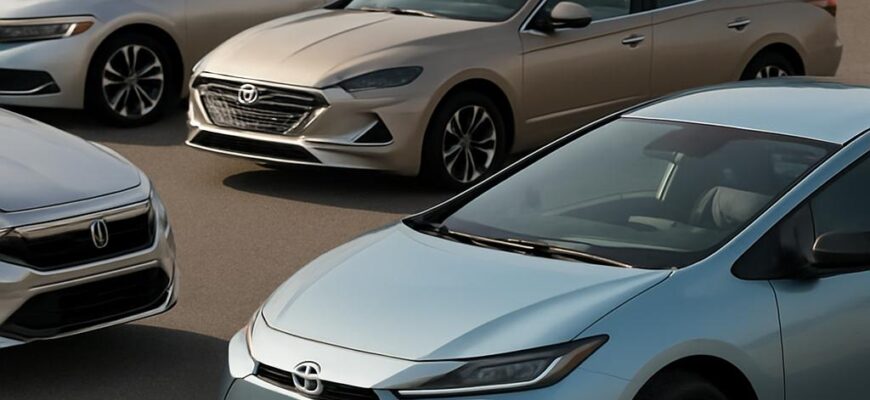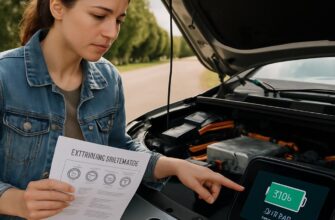Picking a fuel-saving car in 2025 can feel like choosing between three maps to the same destination: all promising savings, but each leading down a different road. This guide walks through what “economical” actually means today, highlights the standout hybrid models worth your money, and lays out how to compare total ownership costs so you make a smart, long-lasting choice.
- Where the hybrid market stands in 2025
- What “economical” means beyond sticker price
- Hybrid types and which are most cost-effective
- How to read fuel economy figures in real life
- Top contenders by vehicle class
- Toyota Corolla Hybrid: efficient and practical
- Toyota Prius: the perennial frugal choice
- Kia Niro and Hyundai Kona/Elantra hybrids: crossover practicality
- Midsize options: Camry and Accord hybrids
- Plug-in hybrids: when electric miles matter
- Real-world example: how to calculate payback
- Maintenance, battery life, and warranty considerations
- Depreciation and resale: the hidden economy lever
- Buying tips to get the most economical hybrid
- How driving behavior and environment change outcomes
- Personal experience: a week of city driving in a compact hybrid
- Financing and incentives that tilt the numbers
- Where hybrids fit in a long-term electrification plan
- Common pitfalls to avoid
- Looking ahead: what to expect beyond 2025
Where the hybrid market stands in 2025
The hybrid landscape in 2025 is shaped by two powerful forces: tighter emissions targets and rapidly falling battery costs. Automakers are keeping hybrids in their lineups as a bridge between gasoline cars and full electrics, and manufacturers continue to fine-tune hybrid systems for better fuel efficiency and lower manufacturing expense.
You’ll find more choices now at lower price points than a few years ago. That doesn’t automatically mean every hybrid is a bargain; price, efficiency, expected reliability, and resale value all influence whether a specific model is truly economical.
What “economical” means beyond sticker price
When shoppers say “economical,” they often mean low fuel cost. But practical economy also includes purchase price, warranty coverage, maintenance costs, insurance, and depreciation. A model that uses slightly less fuel but costs substantially more upfront can be a worse deal over time.
Total cost of ownership (TCO) is the right metric: add fuel, insurance, maintenance, and depreciation, subtract expected incentives, and then compare. Local gas prices, driving patterns, and state incentives tilt this math in different directions, so a good deal in one region may not be in another.
Hybrid types and which are most cost-effective
Not all hybrids are created equal. Conventional (full) hybrids use the electric motor and battery to boost efficiency during city driving and eliminate engine idling. These are often the cheapest to buy and easiest to own. Plug-in hybrids (PHEVs) add a larger battery and electric range but usually carry a higher price and sometimes higher maintenance complexity.
Mild hybrids provide assistance but cannot drive on electric power alone; they save fuel modestly at lower cost and with fewer parts. For strict economy driven by fuel savings without the complexity of plugging in, a well-implemented full hybrid typically delivers the best balance.
How to read fuel economy figures in real life

EPA ratings give a useful baseline, but real-world economy depends on driving style, terrain, climate, and accessory use. Hybrids often shine in stop-and-go city driving where regenerative braking and frequent engine-off periods stack up savings; on long highway runs their advantage shrinks.
Look for owner-reported gas-mileage figures in forums and long-term tests. Places with heavy traffic will magnify a hybrid’s advantages, while long-distance commuters on steady-speed highways should weigh highway EPA results more heavily.
Top contenders by vehicle class
Below is a concise table summarizing widely available hybrid models that consistently rank as economical choices in their classes. Figures are presented as ranges because exact EPA ratings and trims vary by year and drivetrain.
| Class | Model (typical) | Combined mpg (approx.) | Starting MSRP (approx.) |
|---|---|---|---|
| Compact sedan | Toyota Corolla Hybrid | 45–55 mpg | $24,000–$27,000 |
| Compact hatchback | Toyota Prius | 45–60 mpg | $27,000–$32,000 |
| Compact crossover | Kia Niro Hybrid / Hyundai Kona Hybrid | 40–50 mpg | $25,000–$31,000 |
| Midsize sedan | Toyota Camry Hybrid / Honda Accord Hybrid | 40–50 mpg | $28,000–$36,000 |
| Compact luxury | Lexus UX 250h | 35–42 mpg | $36,000–$42,000 |
| PHEV (economy focused) | Toyota RAV4 Prime | ~40 mpg + 30–40 miles electric | $40,000–$45,000 |
The models above reflect common choices where buyers prioritize economy. Actual combined mpg will vary with trim, wheels, and options; careful comparison of EPA ratings for specific trims matters.
Toyota Corolla Hybrid: efficient and practical
The Corolla Hybrid is a straightforward economy-focused compact that hasn’t chased luxury or extreme performance. Its hybrid system prioritizes fuel economy, and Toyota’s long track record with hybrids means predictable reliability and a wide service network.
Buyers often praise the Corolla Hybrid for delivering Prius-level economy in a more conventional compact-sedan package. If you want low running costs with minimal surprises, it’s a very sensible starting point.
Toyota Prius: the perennial frugal choice
The Prius remains emblematic of fuel efficiency and continues to deliver excellent combined mpg for many driving conditions. It tends to offer the best-in-class numbers for city driving and long-term ownership when economy is the main goal.
Practical cabin and cargo space, plus mature hybrid tech, make Prius ownership simple: fewer visits to the pump, and typically stable resale value. If maximum miles per gallon with little fuss is your priority, Prius is still a leading pick.
Kia Niro and Hyundai Kona/Elantra hybrids: crossover practicality
These compact crossovers bring hatchback-like utility to the hybrid equation while keeping fuel economy competitive. They are attractive for buyers wanting a higher seating position and useful cargo volume without a big fuel penalty.
Kia and Hyundai have invested heavily in efficient powertrains and smart packaging, giving good real-world economy. Their warranties are among the most generous, which helps reduce ownership risk and can tilt the TCO in their favor.
Midsize options: Camry and Accord hybrids
The Camry Hybrid and Accord Hybrid offer roomy interiors and more power than compact hybrids, while still delivering strong fuel economy for their class. They make sense if you need more cabin space or highway comfort but don’t want the fuel bills of a conventional midsize sedan.
Both models typically earn solid reliability ratings and retain resale value well. They are often the pragmatic choice for small families who want balance between comfort and operating cost.
Plug-in hybrids: when electric miles matter
PHEVs like the Toyota RAV4 Prime or certain Kia/Hyundai plug-in variants offer a different kind of economy: short daily commutes can be handled on electricity alone, dramatically cutting fuel use. But they cost more up front and the practical benefits depend on whether you have convenient access to charging.
If your daily driving fits within the electric range and you can charge at home, a PHEV can be the most economical option on fuel cost alone. Factor in purchase premium, potential federal and state incentives, and battery warranty terms to judge overall value.
Real-world example: how to calculate payback
Work with clear assumptions: suppose you drive 15,000 miles a year, pay $3.50 per gallon for gasoline, and compare a hybrid that averages 50 mpg to a conventional car that averages 30 mpg. The hybrid uses about 300 gallons per year and costs $1,050 in fuel; the conventional car uses 500 gallons and costs $1,750.
That’s an annual fuel savings of $700. If the hybrid costs $3,000 more than the conventional car, the simple fuel-only payback is just over four years. Add reduced maintenance and possible tax credits, and the effective payback shortens; subtract higher depreciation or insurance and it lengthens. Run the numbers with your local fuel prices and driving habits for a realistic comparison.
Maintenance, battery life, and warranty considerations
Hybrid components are designed for longevity, and battery warranties are longer now than they used to be. Most major automakers offer hybrid battery coverage that spans eight years or 100,000 miles or more, though exact terms vary by manufacturer and region.
Regular maintenance on hybrids is similar to conventional cars, though they often require less brake service thanks to regenerative braking. Shop warranties and local dealer reputation when deciding, since repair costs outside warranty can be significant for electronic or hybrid-specific parts.
Depreciation and resale: the hidden economy lever
Resale value can make a large difference to TCO. Historically, hybrids held value well when fuel prices were high and interest in efficient vehicles strong. In recent years, the rise of EVs has changed buyer tastes, but reliable mainstream hybrids from Toyota, Honda, Hyundai, and Kia generally keep good resale value.
Consider certified pre-owned options: buying a lightly used hybrid with remaining warranty can deliver the best cost-per-mile numbers. I’ve recommended this strategy to friends who wanted high efficiency without the brand-new price tag, and it often yields the fastest route to net savings.
Buying tips to get the most economical hybrid
-
Prioritize trims with lower rolling-resistance tires and smaller wheels — they often return better mpg and are cheaper to replace.
-
Check the vehicle’s city and highway EPA ratings and compare them to owner forums for real-world feedback in climates like yours.
-
Don’t overpay for cosmetic packages that add little to economy; the biggest savings come from drivetrain and weight reductions, not leather seats.
-
Examine warranty coverage for hybrid components and battery — longer, transferable warranties add resale value.
-
Test drive in traffic patterns similar to your daily routine; hybrids can feel different in stop-and-go versus highway driving.
-
Consider certified pre-owned hybrids for better upfront savings while retaining warranty protection and proven reliability.
-
Factor in available incentives or state rebates for PHEVs and check for local HOV lane access perks that add daily value.
-
Ask about dealer-installed items that add weight or change aerodynamics; these can reduce efficiency noticeably.
How driving behavior and environment change outcomes
Your driving style affects actual fuel savings dramatically. Gentle acceleration, early upshifts, and steady-speed highway cruising lower fuel consumption and extend hybrid benefits. Conversely, repeated hard acceleration or heavy loads erode the advantage.
Cold climates reduce battery efficiency and increase fuel use as the engine runs more to heat the cabin; look for models with heat pumps or efficient cabin heaters if you live in a cold region. Urban drivers will generally realize the most pronounced benefits from hybrid technology.
Personal experience: a week of city driving in a compact hybrid
Recently I spent a week driving a compact hybrid around my city’s congested corridors. The car routinely shut off the engine at long lights, and traffic-heavy commutes translated into surprising mileage gains compared with my typical highway-focused driving.
Over seven days of mixed errands and commuting, I noticed fewer gas stops and an easy daily routine change: plug-in charging wasn’t necessary, and the hybrid’s simplicity meant no extra planning—just lower fuel bills and no range anxiety.
Financing and incentives that tilt the numbers
Interest rates and available incentives matter enormously. A low-interest loan or manufacturer financing can reduce monthly cost enough to make a hybrid more attractive relative to a cheaper conventional car. PHEV federal tax credits and state incentives still exist in various jurisdictions, but rules change frequently, so verify current programs before buying.
Leasing can be a practical option for short-term ownership if you value predictable monthly costs and want to avoid resale risk. However, leases may include mileage limits that reduce their attractiveness for high-mileage drivers where hybrids recover their premium more quickly.
Where hybrids fit in a long-term electrification plan
Hybrids remain a compelling choice for buyers not ready for full battery-electric vehicles (BEVs) because they deliver familiar refueling convenience and lower running costs without dependence on charging infrastructure. For many households, a hybrid is a pragmatic next step before transitioning to electric when infrastructure and vehicle availability suit their needs.
Look at hybrids as part of a portfolio: if you can’t reliably charge at home or need longer-range flexibility today, a hybrid may be the most economical and least disruptive option for several years.
Common pitfalls to avoid
Avoid buying solely on EPA numbers without checking real-world reports; don’t assume a hybrid’s high highway rating will translate the same in city traffic. Also, beware of trim-level upgrades that add weight and reduce fuel efficiency for the sake of cosmetic features.
Be cautious about buying used hybrids without service records. A well-maintained older hybrid can still be a bargain, but incomplete maintenance histories increase the risk of battery or electronic issues down the line.
Looking ahead: what to expect beyond 2025
Expect hybrid systems to become more efficient and less costly as manufacturers apply lessons from electrification and scale battery production. We’ll likely see hybrids with lighter batteries, better thermal management, and smarter integration with ICEs to further improve economy.
Regulatory pressure and consumer interest in EVs will continue to reshape offerings, but hybrids occupy a resilient niche. For many buyers in 2025 and beyond, a capable hybrid will still be the most economical practical option, especially where charging access is limited.
Choosing an economical hybrid is less about finding a single “best” model and more about identifying the one that suits your driving pattern, local fuel costs, and long-term plans. Run the TCO numbers with your own data, test drive smart, and consider certified pre-owned options for the quickest route to real savings.
If you found this useful, explore more coverage and deep dives on hybrid and electric vehicle trends at our site. Check out other materials on our technology and innovation page: https://themors.com/technology-innovation-news/ and browse our main site for the latest articles: https://themors.com/.









